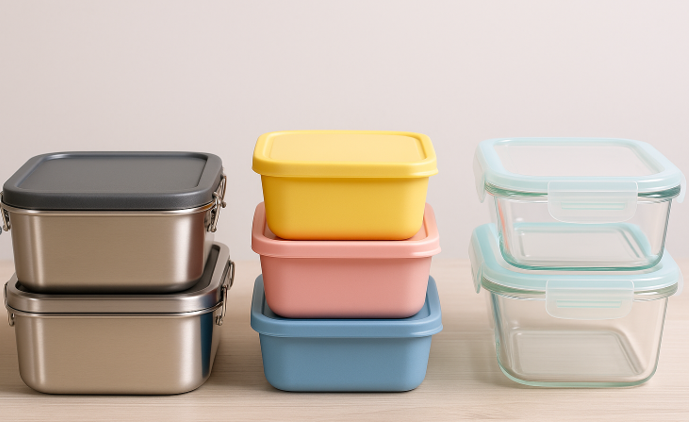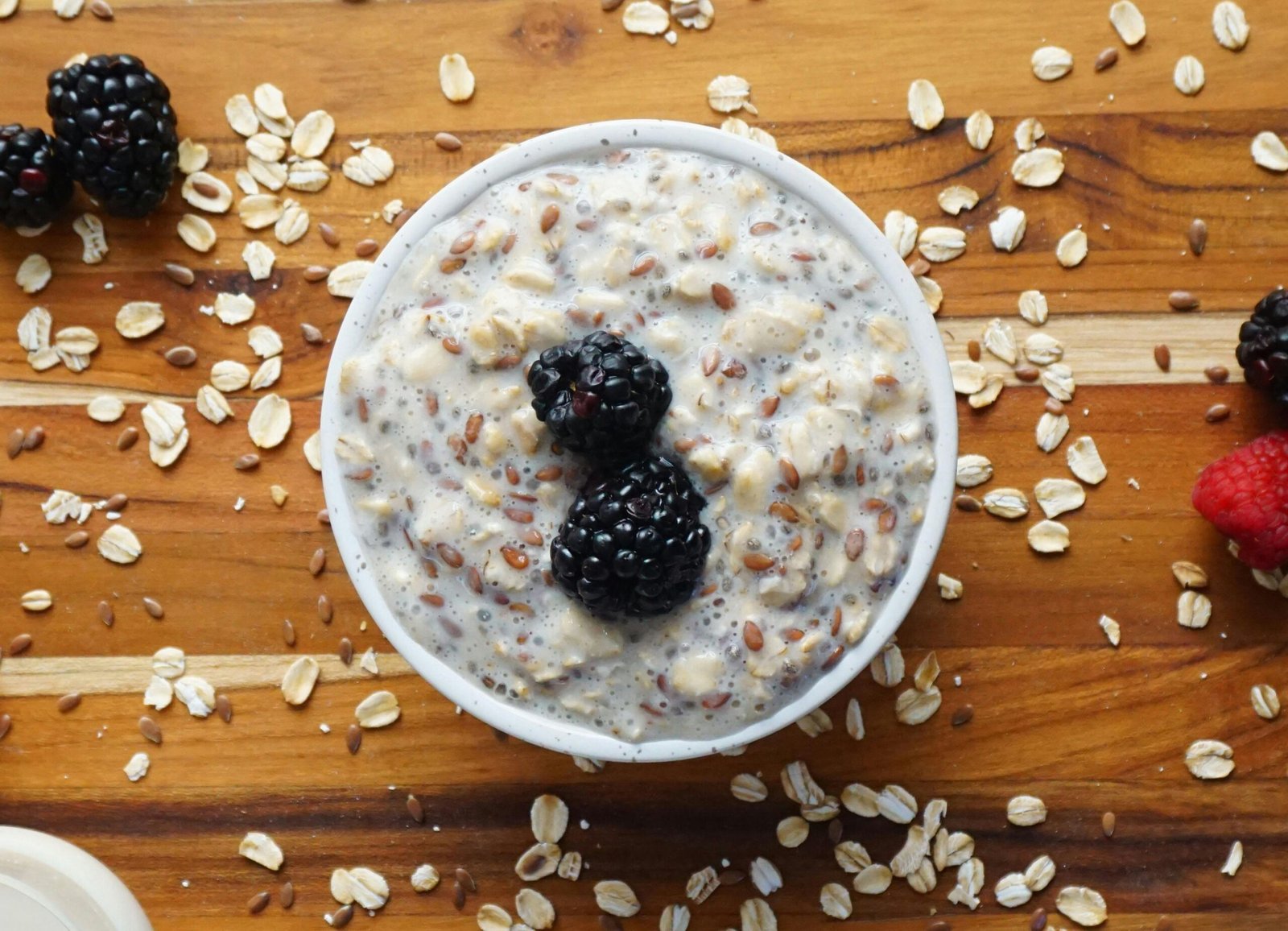Meal Prep Boxes
How to Find the Optimal Solution for your Daily Life
You hold the box in your hand – but where’s the lid? The kitchen drawer looks like a scene from Miss Marple: investigations, riddles, false leads. Sometimes it ends with aluminum foil and a rubber band – and you become an unwilling packaging artist. That’s precisely why it’s worth considering a standardized box system.
🥕 Sustainability Meets Functionality – the Right Box Makes all the Difference
Meal Prep thrives on good organization – and the right boxes. If you prepare meals, you want to store them safely, freshly, and efficiently. But the selection is huge: glass, plastic, stainless steel, with or without dividers, microwave-safe or not? This article offers comprehensive guidance.
Why Good Meal Prep Boxes are Crucial
Choosing the right storage boxes is crucial for successful Meal Prep. Because:
- They influence shelf life & freshness
- They determine the space required in the refrigerator or freezer
- They are jointly responsible for environmental friendliness and health compatibility
Investing in high-quality containers here once pays off in the long run.
Boxes Compared
Different Materials: Glass, Plastic, Stainless Steel, Silicone
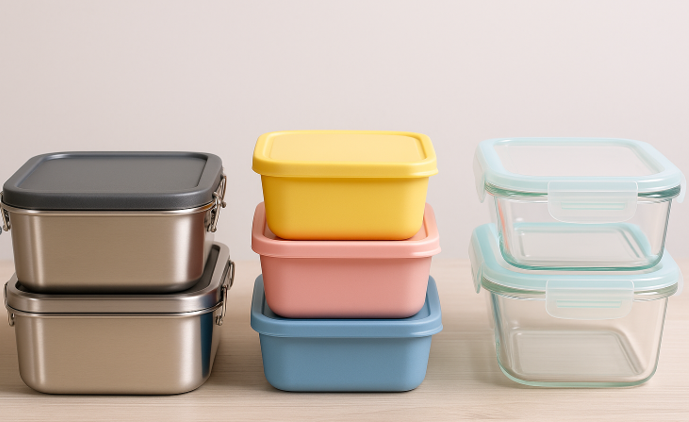
Glass Boxes (my personal favorite)
- Sustainable, BPA-free, taste-neutral
- Oven-safe (without lid)
- Clearly visible (content at a glance)
- Heavier, but stackable
Plastic Boxes
- Lightweight, usually inexpensive, shatterproof
- Caution: Not all are microwave-safe or BPA-free
- Risk of microplastics – especially when heated
Stainless Steel Boxes
- Robust, durable, hygienic
- Not transparent, usually not microwave-safe
- Ideal for outdoor use or kindergarten
Silicone Containers
- Space-saving, often foldable
- Flexible, but not suitable for all dishes
- Taste-neutral, partly microwave-safe
The Right Size & Shape for Every Meal
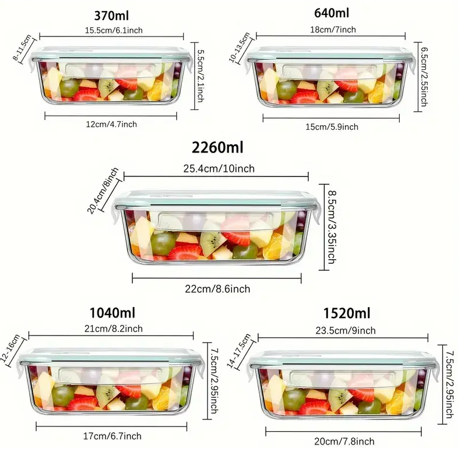
A classic: You prep your meal, but the box is too small – or too big and the food isn’t finished. Therefore, pay attention to:
- 300–700 ml for snacks & side dishes
- 1,000–1,300 ml for main courses
- Multi-compartment boxes for separate dishes (e.g., curry + rice)
Shapes:
- Rectangular: space-saving in the refrigerator
- Square: easily stackable
- Round: optimal for bowls & soups
Meal Prep Boxes for Various Applications
🏢 For the Office & On the Go
- Leak-proof lid (click closure, sealing ring)
- Cutlery compartment or extra lid with space for dip
- Thermobox variant for sensitive foods
- Practical: If your name is on the box, you’ll find it faster in the office kitchen or dishwasher – especially with several colleagues with similar equipment (click closure, sealing ring)
👦👧 For Children & Family
- Unbreakable (stainless steel or high-quality plastic)
- Bright colors & easy closures
- Bento principle with small portions
- It becomes even more practical if the child’s or user’s name is noted on the box – that way it’s guaranteed to end up back in the right backpack or at home in the cupboard
🚪 For Freezer & Storage
- Freezer-safe (check manufacturer’s instructions)
- Uniform shapes for space-saving stacking
- Writable surface or labels
Meal Prep Systems: with Lid, Divider, Bento Box
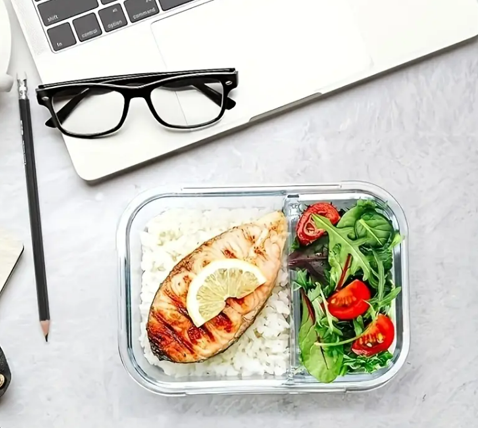
Bento Principle: Known from Japan – many small compartments for colorful meals. Ideal for snacks or creative combinations. Perfect for children, the office, or consciously portioned dishes.
Variable Dividers (modular systems): More and more boxes allow flexible insertion or removal of dividers. This lets you adapt the interior of the box to the dish – ideal for sauce, dip, snacks, or separate components like rice and vegetables.
| Modular Bento Box | With insertable dividers or small inserts |
| Lunchbox with Divider Insert | Removable inserts (mostly plastic or silicone) |
| Glass Box with Insert | Rarer, but particularly practical for oven and refrigerator |
| Clip-In Divider | Divider is firmly anchored, especially leak-proof |
Lids with Extras
- Steam valve: for reheating in the microwave (for plastic, only BPA-free)
- Clip closure: secure hold with side-locking clasps – ideal for on the go
- Snap lid: easy to put on, often more flexible, but usually less airtight
- Stacking aids: integrated grooves or undersides for space-saving storage – many small compartments for colorful meals. Ideal for snacks or creative combinations.
Consider sustainability and safety when purchasing
- BPA-free & food-safe (especially for plastic)
- Dishwasher-safe (less cleaning effort)
- Reusable instead of disposable
- Avoid reheating in plastic (health concerns)
- Prefer to heat in a pan or pot – energy-saving & risk-free
🔎 Extra Info: Why reheating in a pan or pot makes sense
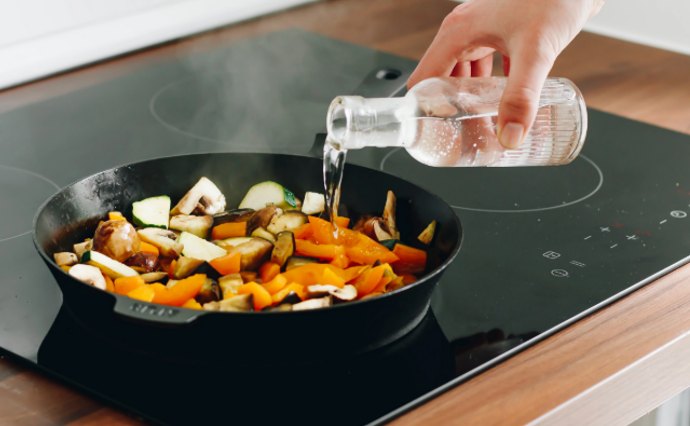
Even though many plastic boxes are now considered microwave-safe, reheating in a pan or pot is often the better choice. This method ensures that food is heated more evenly – not just on the outside, but also on the inside. In the microwave, however, heat is often distributed unevenly, which can lead to hot edges and cool centers.
In addition, many dishes retain a better consistency and taste fresher in a pan or pot – especially vegetables, rice, or pasta. On the stove, small portions can often be reheated faster and with less electricity than in the microwave.
Besides the culinary advantage, heating in a pan or pot also avoids potential material changes in plastic boxes that can occur due to heat – regardless of BPA or microplastics.
Conclusion: If you value even heating, taste, and material preservation, a stove or pot is often better than a microwave.
Overview of Popular Product Types
Without personal evaluation or test assessment – the following systems are well-known and established in the market:
Glasslock (glass boxes in many sizes, with click closure)
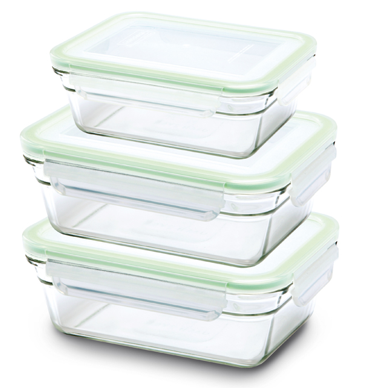
Mepal Cirqula (modular plastic system, BPA-free, stackable)
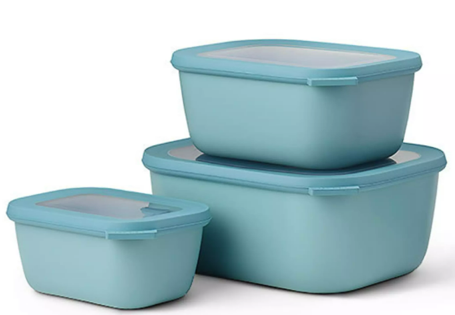
Ecolunchbox (stainless steel boxes with a family focus, robust & plastic-free)
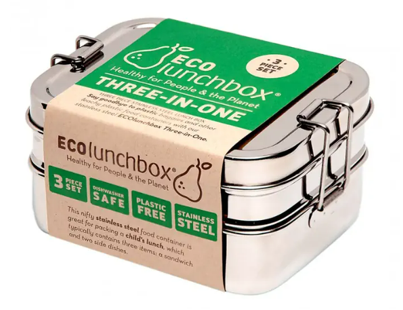
Note: Individual suitability depends on personal needs and the application environment.
What to look out for when buying – avoiding typical pitfalls
- Different shapes & sizes without a system (leads to space problems in the refrigerator)
- Boxes without reliable leak protection (e.g., for sauces)
- Non-combinable lid systems (confusion in everyday life)
- Lack of suitability for microwave or dishwasher
- Too few boxes planned (also for snacks and leftovers)
Checklist: How to find the right Meal Prep Box
- BPA-free and food-safe
- Suitable for your area of use (office, child, freezer…)
- Stable and stackable
- Lid fits securely & is easy to clean
- Enough boxes per week (breakfast, lunch, dinner?)
- Sustainable & reusable
- You like the look & feel – because you use them daily!
👉 Extra tip: download Kati’s Meal Prep Box Compass here:
Conclusion on Meal Prep Boxes
The right Meal Prep box significantly simplifies meal preparation and storage. Whether made of glass, stainless steel, or plastic – the crucial thing is that the system fits your own kitchen, application, and daily routine.
🔗 Your next steps:
- Discover Meal Prep recipes in Kati’s inspiration corner
- Test the digital kitchen planner Kati and discover new ways to optimize your meal organization
👉 Test the K.B. Kitchen Assistant “Kati” Now
Bonus knowledge: Why microplastics are a serious issue

Studies show that microplastics are now found almost everywhere – in rivers, oceans, soils, and even in our bodies. Researchers at the University Medical Center Amsterdam first detected microplastics in human blood in a widely noted 2022 study. Around 77% of the tested individuals showed traces of it. The German Federal Institute for Risk Assessment (BfR) and the WHO are also increasingly warning about long-term effects on the organism.
Microplastics can enter our bodies through plastic packaging, drinking water, or food – especially when heating plastic containers, tiny particles are released. Therefore, switching to BPA-free or plastic-free alternatives like glass or stainless steel is not only sustainable but also a plus for your own health.
👉 To the Quarks article (podcast recommendation)
Legal Notice and Sources
Legal notice
The information contained in this article is for general guidance and does not replace individual nutritional advice.
Sources used:
- Manufacturer information
- Own market analysis
- Studies on the effects of microplastics (e.g., BfR, WHO)
